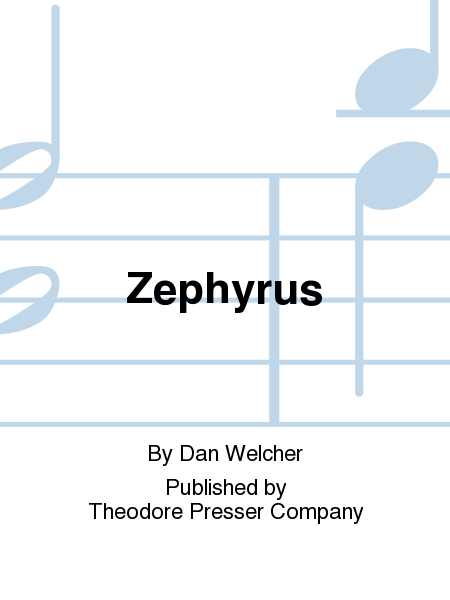Details
Description
SKU: PR.16400212S
Composed by Dan Welcher. With Standard notation. Duration 16 minutes. Theodore Presser Company #164-00212S. Published by Theodore Presser Company (PR.16400212S).UPC: 680160037605.
Works of chamber music including flute and strings are not nearly as numerous as those for clarinet, or even the oboe. Probably the reason for this is the less assertive, more pure tone the flute possesses - it can't compete for volume or range with the clarinet, except in its top octave, and the oboe's tone is more penetrating and easily discerned from within a string texture. Consequently, composers who have written for flute and strings have done so in lightweight divertimento works: compare, for instance, the delicate flute quartets of Mozart with his monumental quintet for clarinet and strings. When Karl and Joan Karber approached me with the ideas of writing a work for flute and string trio, I originally thought it would be best to write a humorous, rather offhand piece - but a look at their repertoire (mostly comprised of smaller works of the Rococo period) convinced me that it was the last thing they needed. In spite of the challenge (or maybe because of it?), I determined to write a large work, and a serious work. Zephyrus (named for the God of the West Wind, in deference to the flute) is a three-movement work, with each movement cast in a very different form, but all three being built of the same twelve-note series. There is also a rhythmic motive and a pair of themes that appear in all three movements. The first movement plays with the idea of contrast and persuasion. The flute, at the outset, is the hell-for-leather protagonist, charging and swooping around the strings - who seem oddly unconcerned by his passion. Indeed, they have a more somber song to sing - and as the movement unfolds, the flute becomes less and less active, while the strings become increasingly enlivened. By the midpoint, when all four instruments are finally in the same meter and the same tempo, the flute's energy has finally infected the other three players, and this energy does not let up until the movement's abrupt final cadence. The second movement begins with a tag from the first - as if the energy left over was too great to simply stop. At length, though, a very poignant flute melody appears over an almost bluesy harmony in the strings. After this has been fully exposed, a slight increase in motion, marked gently rocking in triplets, features a theme-fragment from Leonard Bernstein's Symphony No. 2 (Kaddish). Bernstein died as I was writing this work, and it seemed quite natural to encourage what was already implicit in the music, and create an Elegy for L.B. The music rises and peaks, then in the recapitulation of the opening the Kaddish theme reappears, as the ensemble suggests a gentle song of sleep. The final movement is a Rondo-Variations form, with the slight alteration of adding the main theme of the second movement in what would be the trio of the form. The ritornello theme is a kind of ethnic dance music, almost an allusion to the Klezmer ensembles of Eastern Europe. The successive episodes between the ritornelli are loosely organized variations on the basic theme, but always beginning with a metric modulation, a rhythmic changing of gears. The movement reaches and apex of speed and furious pulsing, then abruptly pirouttes, and finishes. Zephyrus was written between April and November of 1990 in Austin, Aspen, and Honolulu, and is dedicated to Karl Kraber and The Chamber Soloists of Austin. --Dan Welcher.

 Share
Share